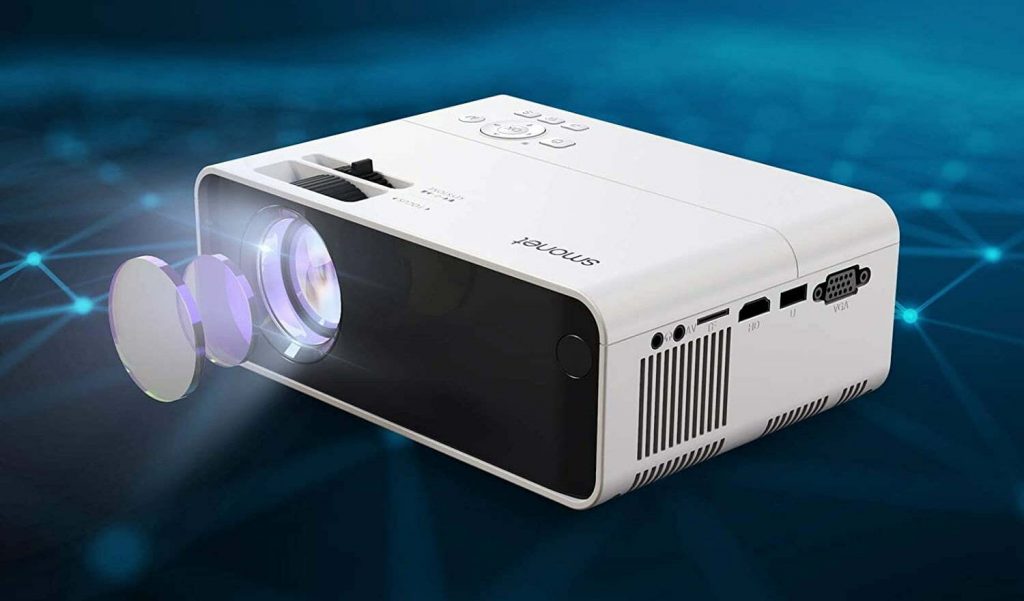3D technology has been around for quite some time, and it was originally only available on a huge screen. However, you can now enjoy 3D from the comfort of your own home as they’ve become popular in recent years.
The need for 3D-compatible technology has increased along with this growth. Users increasingly need to make sure they can access such 3D content and view it in all its glory.
When deciding which projector to buy, home theater enthusiasts must consider this question. As a result, in this article, I’ll describe what is a 3D projector, and I’m sure you’ll love it.

What Is a 3D Projector?
Three-dimensional data can be projected to a two-dimensional surface, like a screen or a wall, using a 3D projector. The viewer can experience depth with 3D projections instead of flat, standard projector images. Because of this sense of depth, the audience can simulate an event in real-time.
Two almost similar images are simultaneously projected onto the screen to simulate depth. Therefore, you need a set of glasses that can filter polarity so that you can see both images with each eye to watch the screen properly. You can purchase these 3D glasses separately or together with the projector set.
A 3D projector functions similarly to a standard projector, using a light source to project an image onto a wall or a blank projection screen. The difference is that it can produce a 3D illusion by projecting different versions of the same video onto each of your eyes.
How Does 3D Projector Work
Each eye has to get a slightly different image to “see” in 3D. Traditionally, special spectacles are used for this. These overlapping, oddly similar visuals give your brain an impression of depth.
The simplest approach to delivering a 3D effect is with anaglyph images and glasses. Everyone is definitely familiar with the red and blue glasses that were popular during earlier attempts at a 3D revival. These function by filtering a picture made up of two almost similar color layers overlaid.
Today’s 3D movie experiences are usually delivered using polarizing technologies, they send light from the projector through polarizing filters, which cause the light waves to oscillate in two directions, one meant for each eye.
There are 4 formats for 3D videos: checkerboard, side-by-side, frame sequential, and frame packing.
Checkerboard
Many DLP 3D Ready televisions support the checkerboard format. The two images for the left and right eyes are interleaved in this way, with every other pixel traveling to the opposing eye. Examine an actual checkerboard and imagine the squares as pixels. The black squares would be directed toward the left eye, while the red squares would be directed toward the right eye. The television separates and broadcasts the two interlaced pictures successively. The photos that result are only half-resolution.
Read more: What Is a Pico Projector?

Side-by-side
The side-by-side 3D format, as the name implies, consists of two frames that are compressed to half their original resolution horizontally. Their signal is then sent concurrently so that the 3D projector may display them stereoscopically, with one eye seeing one image and the other seeing another. A 1080p HD transmission with 1920×1080 pixels per frame will result in two 960 x 1080 frames hanging side by side, which the 3D projector will then separate and extend to their original 1920×1080 resolution.
Frame sequential
In some ways, the Page Flip or Frame Sequential format is the most basic 3D format available. This is a full-resolution signal that is supplied to the projector at 120 frames per second. The frames swap in order, so the display continuously receives the left and right eye frames. The source does not need to be decoded by the projector. It only needs to be able to receive a 120Hz signal to function. This is a high-bandwidth format that can accommodate a full-resolution transmission.
Frame packing
Frame packing is similar to frame sequential; however, they are not the same. Frame packing transmits the images for the left and right eyes to the projector at the same time, piled on top of one another with a short space between them. Essentially, the source delivers a single large double-height frame rather than two smaller frames. The signal is sent at either 24 or 60 hertz. The projector must then separate and display the two images successively.
Types of 3D Projectors
3D-ready projector
A 3D-ready projector is only capable of producing a 3D image in the Frame Sequential format. Because the aforementioned 3D format is one of the most basic types of 3D available, it is expected to minimize production costs. Many customers have buyer regret after purchasing this projector type, believing it to be a full 3D projector capable of rendering all transmission types.
Full 3D projector
A full 3D or full-3D projector, on the other hand, can handle all four formats, from Frame Packing to Checkerboard. For example, if you want to view Avatar in 3D on Blu-ray, you’ll need a Full 3D projector with full 1080p 3D projection and compatibility with HDMI 1.4 or Blu-Ray 3D.
Also read: What Is A Short Throw Projector?
Conclusion
People passionate about home cinema and gamers are ready to bring the 3D experience back into their homes by purchasing 3D projectors and 3D glasses that enable them. This holographic effect, which gives the impression of depth to whatever you are watching on the projector screen, can be used to improve the viewing experience of videos and video games.
It’s a current “reboot” or iteration of the red-and-blue 3D glasses used for monochrome or black-and-white movies back in the day. So, what are you still waiting for? Buy yourself a 3D projector and enjoy the full experience. Choose your favorite type and use every benefit of it. Hopefully, by reading this article, you got the idea of what is a 3D projector and find it easier to make an informed purchase.